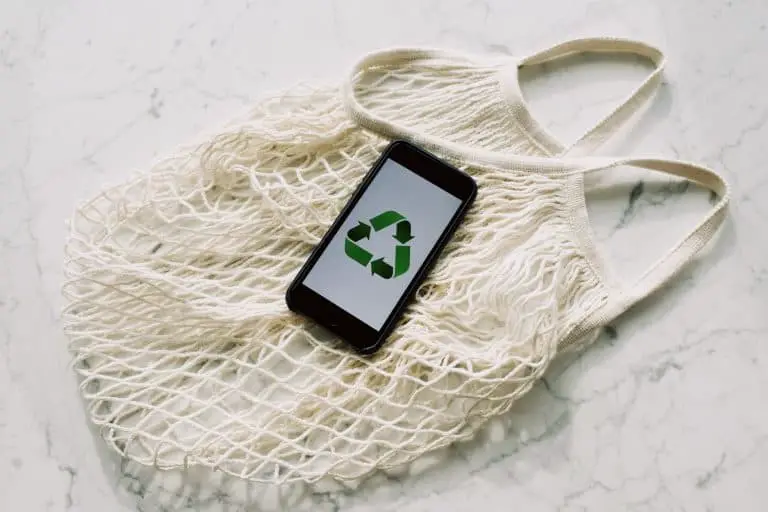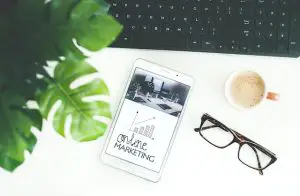Introduction
Making your company sustainable is not an option anymore. Over the past few years, the fashion market has changed, realising that the fashion industry cannot the most polluting industry after fossil fuels. Firms now need to be able to address market demands that require fashion companies to be sustainable, transparent and traceable.
Firms of all sizes and sectors are heavily investing into changing their supply chain in order to meet these demands, but at the same time, making a company sustainable may require not only to act on how does the brand move a garment from point A to point B but to redesign the whole model that the firm adopts to bring value to the market.
This is why in this post, we are going to discuss what elements are part of the business model of a sustainable fashion company. As we are going to see throughout the different sections of this article, sustainability is a complex concept, and there is no one-way approach to it. On the contrary, firms can pick and choose, among different strategies, by selecting those approaches that are better able to lower the carbon footprint of your firm, while increasing the value delivered to your end-customer.
So with no further ado, let’s get down to it. These are the different viewpoints and perspective your fashion brand should consider to adapt or completely revolutionise its business model to become more sustainable.
- What Makes a Business Model Sustainable
- Let’s start with Circular Economy
- Let’s consider Corporate Social Responsibility
- Let’s now move towards Collaborative Consumption
- Don’t forget the importance of technology
- Let’s finish with consumer awareness
- Conclusions
1. What Makes a Business Model Sustainable
Before moving into the 7 strategies that can be followed to achieve sustainability, it’s necessary to clarify what sustainability means.
There are in fact three different dimensions of sustainability that need to be addressed.
- Planet. The most commonly discussed “P” is sustainability is the P for Planet. This dimension of sustainability relates to environmental sustainability. A fashion firm needs to make sure that the environmental cost of their collection is not going to burden the environment, because of the over-exploitation of natural resources.
- People. The second ‘P’ is for People. This ‘P’ stands for respect for human rights and for safe and compensated working conditions. This is a different dimension of sustainability which is particularly relevant for those fashion companies who may place their manufacturing plants in countries where unions and labour rights are not as astringent and protective as the ones experienced in more developed countries.
- Profit. This ‘P’ stands for Profit. As we are talking about business organisations we need to remember that in fact, the goal of a business is to produce profits. This still needs to be the case, meaning that firms need to observe a triple bottom line. At the end of a company’s income statement, the profit made still needs to allow the organisation to operate. If that was not the case, then we would not be able to manage the costs associated with respecting the environment and compensating employees.
Keeping these 3 Ps in mind, we can now look at different approaches and strategies that can help a business develop a sustainable business model, by working on one or more of the blocks that comprise it. If you’d like to hear more about the triple bottom line, in this article we delve into the details.
2. Let’s start with Circular Economy
Let’s start with defining a circular economy. The circular economy is an economic system of ‘closed loops’ in which raw materials, products and their components loose as little value as possible during their consumption. An example?
Imagine you shop for a baby, after the baby has won the clothing once, they may be too small, as the baby has grown. The user could benefit from a buyback program, returning the clothing to the store, who may provide a discount for new purchases, and after a quality inspection, the clothing could be professionally washed and made available to another baby at a discounted price.
This example allows us to see that your fashion brand could become more sustainable by endorsing a circular economy approach, which may feature an additional element of creative consumption.
- Recycling. This is one of the most commonly known approaches to a circular economy system. In the context of fashion, a recycling approach allows for materials used in existing garments to be re-processed into new fibres. Recycling has very strong implications in terms of resonating with those costumers who follow the waste hierarchy comprised of the famous: reduce, reuse and recycle.
- Downcycling and Upcycling. This is maybe a lesser-known approach to sustainability. Downcycling is defined as the recycling of waste where the recycled material is of lower quality and functionality of the original material. The latter approach is well known as an expression of creative consumption. Upcycling is known also as creative reuse, and it relates to the process of transforming by-products, waste materials, useless or simply unwanted products into new materials or products which are perceived of higher quality, as they may have a high environmental value or even artistic value.
Just by implementing these approaches to your fashion brand, you could heavily impact the environmental cost of your brand and expand your market, by attracting more customers who consider these practices necessary in fashion. Simply getting started with a take-back program can infact make a huge difference. In these programs, in fact, a designer or brand becomes accountable for a product at the end of its life. If you’d like to learn more about this approach to sustainable business models, this article adds more information.
3. Let’s consider Corporate Social Responsibility
Let’s now move to a different approach to sustainability, which is not grounded on the circular economy, but that instead approaches it from the perspective of CSR or Corporate Social Responsibility.
As we did in our last paragraph, let’s start with a definition. Corporate Social Responsibility is a managerial perspective where an organisation holds itself accountable towards a very broad set of stakeholders, an extended community of people who, despite not having any ownership stake in the firm (shareholders) are still impacted by its decisions especially when it comes to its approach to matters which impact the public.
Let’s explain this in a more detailed way. When managers need to make decisions regarding a company they are leading into the future, they need to take into account some degree of compromise, as no decision will make everybody happy. In the past, the priority, when it came to making these difficult decisions, was to make shareholders happy, as they are the owners and the financial funders of the company. In order to keep shareholders happy, and to keep profits ‘exciting’ firms could act against ethical principles, by only looking into the ‘legal’ requirements that firms needed to follow. Now, these legal requirements, at times could be very loose, and hence the interest of a much broader set of individuals could be downplayed.
Now firms are required to reverse this approach to decision making, because our contemporary society is unforgiving, to those firms who act in their own selfish interests and not towards the common good, and as a result, firms now need to embrace corporate social responsibility, as an approach designed to put the community first and the shareholder later.
As companies approach a CSR strategy to develop their sustainable business model, some examples come to mind.
- Sweatshops. This term was coined to address factories with very poor, socially unacceptable, or illegal working conditions. Companies, who place production divisions abroad, again may be able to build these factories, by sticking to legal provisions, which still have a very unethical stance on human rights. In these locations, workers may have to work very long hours with very low pay, under difficult or even dangerous working conditions.
- Fairtrade. Given that as discussed legal standards may not be completely helpful to assess human sustainability, it’s up to actual businesses to develop approaches that allow them to show how equitable trade and business relationships can be developed between developing countries and developed countries. Fairtrade organisations seek to promote greater equity in international trade, and brands who decide to join these organisation may be able to provide additional validation to their attempt to show their consciousness and awareness of the issues caused by globalisation.
This approach to developing a more sustainable, equitable and respectful production line, is what major brands are following, as the demands of the market require a higher degree of transparency. We look into these topics further in this article: From Material Sourcing to Effective Distribution.
4. Let’s now move towards Collaborative Consumption
What about collaborative consumption? In simple words, collaborative consumption is the shared use of a good or service by a group. Usually, our traditional consumption model, an individual pays the full cost of a good and gains exclusive access to it, however with the approach of collaborative consumption, multiple people have access to a good and share the cost.
The drivers for this approach are linked to sustainability awareness, economic gains, but also the enjoyment of the activity, or product itself. In the collaborative consumption model, therefore, the market level is much more even or horizontal, as this approach builds upon a peer-to-peer model where a peer-provider is offering assets to borrow, rent or share whereas, others, peer-users use them.
Because of the sheer size of the market, we can now talk about a share-economy as a whole economic ecosystem based on acquiring, providing and sharing access to goods and services through community-based online platforms.
Aside from the element of collaborative consumption, a second element to take into account as we look through this angle on sustainability is the evolution of the perception of second-hand products. If in the past, the concept of second-hand was something that users would associate to low-qualitylow-price. However, over the last decade, the development of apps which allowed a broader and broader community of users to enter these platforms and to develop a vision of the second hand market which is now perceived with a much higher value.
As we delve into this topic we can see how different stances on the matter are possible. Rent the Runway is an example of a firm which was able to develop its business model around the idea of renting instead of buying high-end clothing, so that the customer experience associated with elite shopping was not connected to elite spending and allow customers to avoid post-purchase remorse. We address this business model in full detail in this article: The Business Model of Rent the Runway Explained.
An alternative approach to this stance on sustainability is provided by the second-hand market and the value that iconic, used items still retain even after having been through the hands of the first owner. In this sense, we can see how even planning for a second-hand purchase cycle can increase the investment value of your brand. We discuss this topic in more detail in this article: How Fashion Brands Can Assess the Value of their Second Hand Market.
As an empirical demonstration of how this trend is becoming more and more widespread, we can see how reseller platforms are becoming more common, especially because of their ability to leverage both the exclusivity of iconic brands, with the exciting discovery experience of a thrift shop find.
The success of this type of sustainable fashion models is very much connected to the social dynamics related to online commerce and social media. This relationship has in fact provided an additional ‘dopamine boost’ to consumers who are able to interact online and to experience a very immersive shopping experience.
Let’s now move towards another angle on fashion sustainability, one that connects to technological innovation, and how they can provide an additional edge to developing a sustainable business model in fashion.
5. Don’t forget the importance of technology
As we now approach the technological area, there are different dimensions that can help us make our business model more sustainable by adopting new technological innovations.
Let’s start with one of the most relevant keywords in this sector: blockchain.
- Blockchain is a technology capable of providing a verifiable record as to who buys what from whom. By using blockchain, fashion companies can claim to be transparent and traceable, showing their efforts to reduce the environmental impact of their organisation, which can now be checked and verified.
Another technological enhancement for the fashion industry is zero-waste production and post-consumer zero-waste.
- Zero-waste production refers to a trend in fashion manufacturing related to production lines that produce zero to little waste in production.
The third level of technological innovation when it comes to sustainability is the development of bio fibres.
- Biomass fibres are fabrics obtained by processing renewable biomass resources as: natural, animal and plant fibres, recycled fibres and synthetic fibres.
This latter level of technological innovation is impacting fabric creation, and it allows us to see how biomass fibres could be beneficial to the fashion industry in the light of the increasing scarcity of raw textile resources.
6. Let’s finish with consumer awareness
Even if you don’t change a single thing when it comes to your operations, there’s a lot that can be done in terms of educating your customers.
There are many ways in which the message and philosophy of your brand can impact your customer’s post-purchase behaviour, and as discussed in this post: Fashion Sustainability and Customer Accountability the way consumers use their clothing is a big part of the overall environmental impact of fashion.
Some examples of approaches that move in this direction are:
- Clothing washing habits. Some fashion brands persuade their customers to reduce the amount of washing of their clothes by building more ‘resilient’ clothing and garments, impacting the overall resource use of the product’s lifecycle. An example of this approach is provided by Nudie Jeans.
- Wear and tear customer support. In this case, a fashion brand can provide an additional level of support by assisting customers who are experiencing issues with their garments and may require assistance in maintaining the clothing in good condition. An example of this approach is provided by Patagonia.
It’s important to notice that in fact in order to influence our customers it’s necessary to educate them and make them realise the value and impact associated with their actions. This element of customer education can most certainly entail a marketing strategy designed to inform and educate our customers.
All in all the sustainable approach we are going for is based on the idea of co-creating value with your customer, by building a relationship with himher that starts with the purchase of the product but goes on to develop a very meaningful partnership where customers and brands together tackle an issue of social, economic and environmental relevance.
So these are the 5 strategies or viewpoints on making your brand more sustainable by implementing one of these 5 approaches. But is sustainability a holistic solution to your brand’s problems? It’s unlikely, sustainability itself has a few challenges to overcome. In the next paragraph, we’ll try and discuss them.
7. Conclusions
So here we are. These were 5 different approaches to developing a sustainable business model for your fashion brand. As we’ve discussed, making our firm sustainable can be a complex process, but all in all, it allows for a lot of innovation and opportunity to expand on our collections, brand and customer base.
We need to remind ourselves that working in the creative industries really allows us to be creative not only in the development of our products but also in the way we are able to resolve these challenges and innovate the fashion industry.
If you’re looking for an opportunity to deepen your understanding and knowledge of the practices of sustainable fashion, don’t hesitate to take a look at our course “The Sustainable Fashion Industry“. Our short and to-the-point, online class covers a wide range of topics spanning from sustainable business models to strategies to lower your carbon footprint. Here’s a link to the course, if you use the discount code BLOG20 at checkout you can access a 20% discount. Enjoy!







